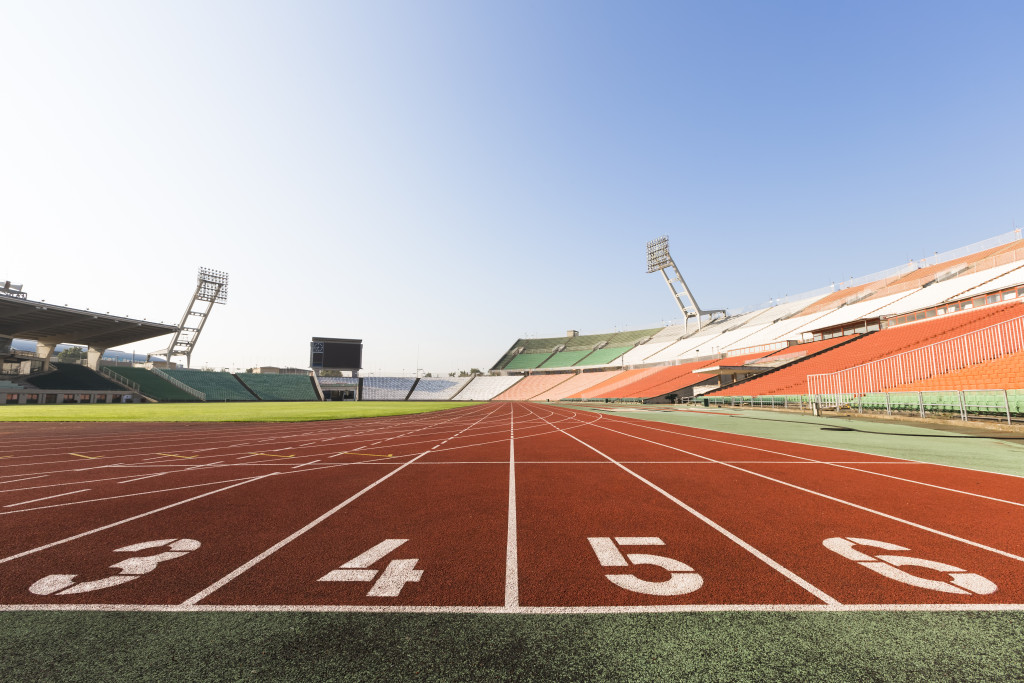- Calls to this hotline are currently being directed to Within Health, Fay or Eating Disorder Solutions
- Representatives are standing by 24/7 to help answer your questions
- All calls are confidential and HIPAA compliant
- There is no obligation or cost to call
- Eating Disorder Hope does not receive any commissions or fees dependent upon which provider you select
- Additional treatment providers are located on our directory or samhsa.gov
Olympic Athletes and Bulimia

Contributor: Leigh Bell, BA, writer for Eating Disorder Hope
Olympic athletes are masters of their physicality. They track, train, and push their bodies to compete against the entire world in games watched by hundreds of millions of people. Many will do whatever it takes win — and to maintain a champion’s body.
Eating disorders are far more prevalent in elite athletes than the general population. Not unlike the general population, though, bulimia is the most common illness in athletes, and women are most vulnerable. Especially prone to bulimia are women in aesthetic sports where body size and shape affect performance like diving, running, and gymnastics.
How Many Athletes Struggle with Bulimia?
One of the most comprehensive studies on the subject showed 36% of female elite athletes struggled with bulimia, compared to 17% in the control group1. Eating disorders were most prevalent in females competing in aesthetic sports (42%).
Athletics become extremely competitive in middle and high schools. Teens begin to compete before larger, more demanding crowds and a coveted college scholarship is the carrot driving a difficult race. This pressure plus the changing body and social pressures of adolescence can be an eating disorder’s perfect storm2.
Gymnast Cathy Rigby
Cathy Rigby was 16 when she first threw up her food at a U.S. Olympic training camp in 1968. Rigby’s coaches wanted her to shed 4 pounds from her 93-pound frame. Rigby was the highest-scoring American gymnast and a media darling of the 1968 Olympic Games in Mexico City. She retired from the sport long before she recovered in 1981.
Swimmer Amanda Beard
 Swimmer Amanda Beard was just 14 years old, often photographed holding a teddy bear, in 1996 when she won three Olympic medals. She began to struggle with bulimia soon after, and didn’t stop for years because she wanted to look good in her uniform: a swimsuit.
Swimmer Amanda Beard was just 14 years old, often photographed holding a teddy bear, in 1996 when she won three Olympic medals. She began to struggle with bulimia soon after, and didn’t stop for years because she wanted to look good in her uniform: a swimsuit.
Olympic Diver Brittany Viola
Olympic diver Brittany Viola was a teenager when she entered residential treatment for bulimia. Now recovered, Brittany is sharing her story in Washington D.C. during the Eating Disorder Coalition Spring Lobby Day, May 13.
Bulimia in College Athletes
Almost 10% of female college athletes had a significant problem with bulimia in a study of 1,445 student athletes from 11 Division-1 universities3. Almost 24% of the females and 6% of the males vomited to control their weight. About 12% of the females and 5% of the males used laxatives for the same reason.
The sports world is serious about the risk of injury. Coaches and teams have in place prevention, screening, and treatment programs for athletes to get the right support when they have a physical injury. The sports world can, and probably should, have a similar framework for eating disorders4.
About the Author:
Leigh Bell holds a Bachelor of Arts in English with minors in Creative Writing and French from Loyola Marymount University in Los Angeles. She is a published author, journalist with 15 years of experience, and a recipient of the Rosalynn Carter Fellowship for Mental Health Journalism. Leigh is recovered from a near-fatal, decade-long battle with anorexia and the mother of three young, rambunctious children.
Community Discussion – Share your thoughts here!
How can we, as an eating disorder community, make a positive impact for change to help our Olympic athletes and their coaches and increase awareness?
References:
- Sundgot-Borgen, J., Torstveit, M.K. (2004) Prevalence of eating disorders in elite athletes is higher than in the general population. Clinical Journal of Sports Medicine. 14, 25-32.
- Martinsen, M., Sundgot-Borgen, J. (2013) Higher prevalence of eating disorders among adolescent elite athletes than controls. Medicine & Science in Sports & Exercise. 45(6), 1188-97.
- Johnson, C., Powers, P., Dick, R. (1999) Athletes and eating disorders: the National Collegiate Athletic Association study. International Journal of Eating Disorders. 26(2), 179-88.
- Currie, A. (2002) Sport and eating disorders: Understanding and managing the risks. Asian Journal of Sports Medicine. 1(2), 63-68.
Last Updated & Reviewed By: Jacquelyn Ekern, MS, LPC on May 15th, 2015
Published on EatingDisorderHope.com

The EatingDisorderHope.com editorial team comprises experienced writers, editors, and medical reviewers specializing in eating disorders, treatment, and mental and behavioral health.

